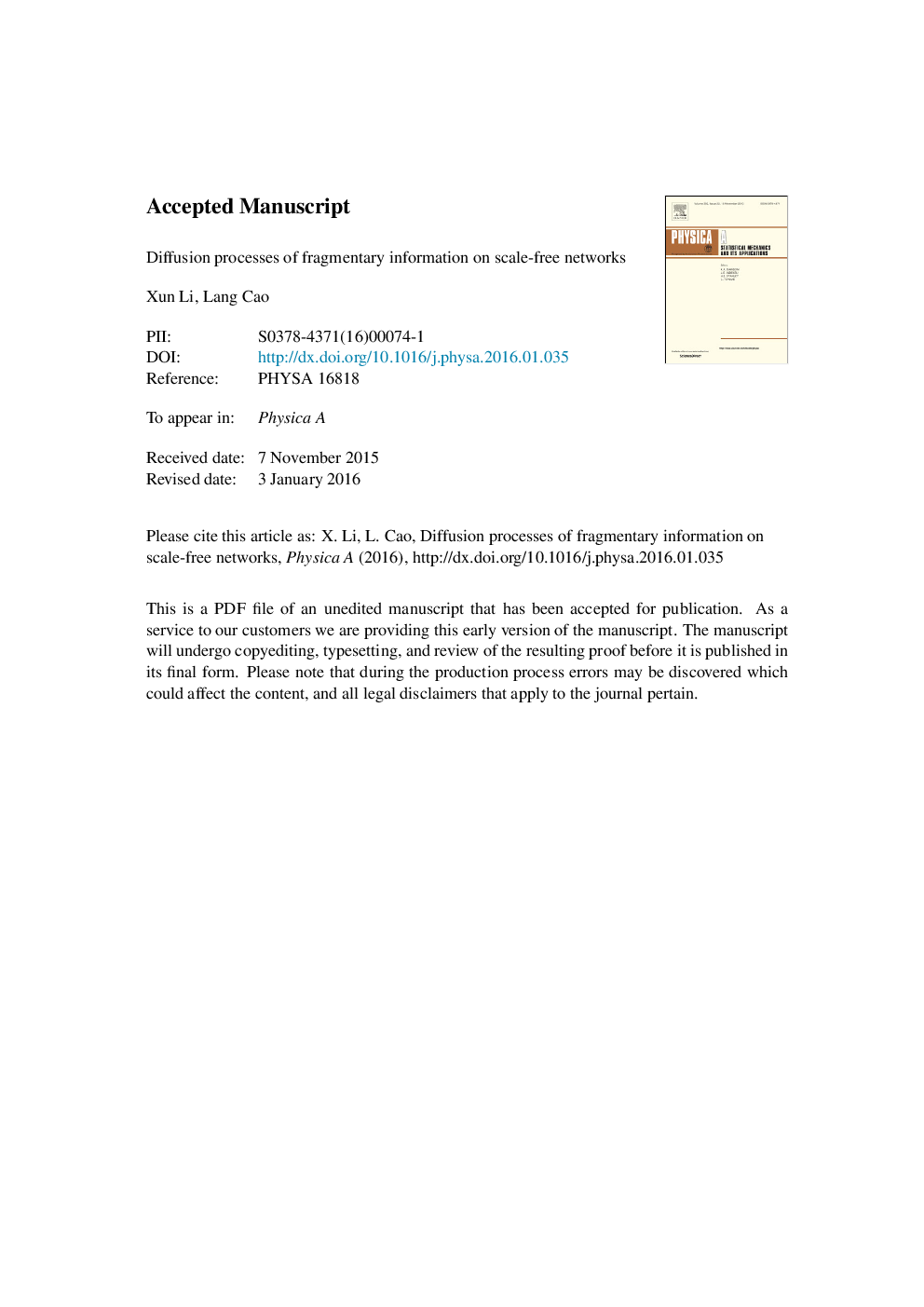| Article ID | Journal | Published Year | Pages | File Type |
|---|---|---|---|---|
| 7378311 | Physica A: Statistical Mechanics and its Applications | 2016 | 30 Pages |
Abstract
Compartmental models of diffusion over contact networks have proven representative of real-life propagation phenomena among interacting individuals. However, there is a broad class of collective spreading mechanisms departing from compartmental representations, including those for diffusive objects capable of fragmentation and transmission unnecessarily as a whole. Here, we consider a continuous-state susceptible-infected-susceptible (SIS) model as an ideal limit-case of diffusion processes of fragmentary information on networks, where individuals possess fractions of the information content and update them by selectively exchanging messages with partners in the vicinity. Specifically, we incorporate local information, such as neighbors' node degrees and carried contents, into the individual partner choice, and examine the roles of a variety of such strategies in the information diffusion process, both qualitatively and quantitatively. Our method provides an effective and flexible route of modulating continuous-state diffusion dynamics on networks and has potential in a wide array of practical applications.
Related Topics
Physical Sciences and Engineering
Mathematics
Mathematical Physics
Authors
Xun Li, Lang Cao,
